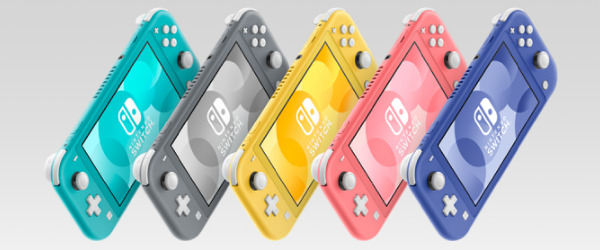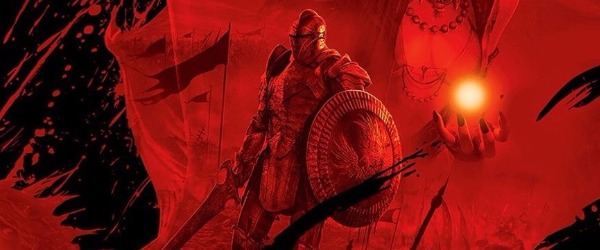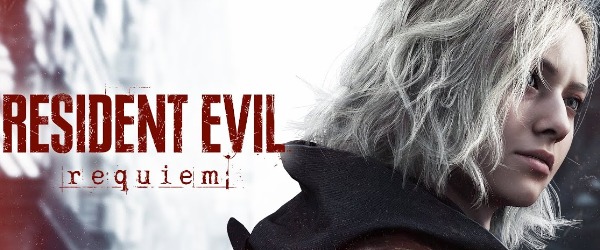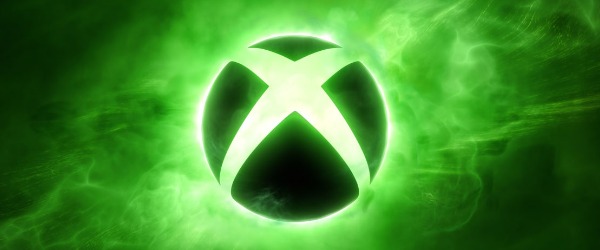
History of Final Fantasy: Lightning Strikes Thrice (Final Fantasy XIII-2 and Lightning Returns) - Article
by Taneli Palola , posted on 21 March 2017 / 13,460 ViewsWhile Final Fantasy XIII wasn't exactly well received upon release, it did have its fair share of fans, and regardless of its mixed critical and fan reception it still sold extremely well across all regions. Still, whatever you thought about Final Fantasy XIII, at least once the game had been released you probably thought that you could then leave it behind and look forward to the next major installment in the series. Of course, as we now know, Square Enix had very different plans in mind.
Not only did Final Fantasy XIII become just the third game in the entire mainline series to receive a direct sequel (after Final Fantasy X and VII), but it actually got two of them. How much they were needed is another issue altogether, especially considering that the ending of Final Fantasy XIII didn't really feel like it needed a continuation. Still, here we are now, so let's talk about the rest of the Lightning trilogy.
And Then There Was Time Travel: Final Fantasy XIII-2

Final Fantasy XIII-2 began development in early 2010, just a few months after the release of XIII, with the intention of fixing the issues and complaints made about the first game. Development lasted roughly 18 months and it was completed largely by the same team that had worked on the previous game, including Motomu Toriyama as director, Yoshinori Kitase as producer, and Tetsuya Nomura designing the main characters.
Much of the game's development was focused on addressing the numerous complaints laid upon FF XIII. This meant, for example, that terms such as l'cie and fal'cie were intentionally avoided as much as possible so as to prevent any confusion about them. Another point of focus was giving the game a dark atmosphere to suit the setting of a world that had gone to ruin.
One of the many issues that needed to be fixed for the sequel was the poor communication between various departments during development, especially as the team behind FF XIII was larger than any prior game in the series. This was even more critical for XIII-2 as Square Enix sought aid from Eidos and Tri-Ace during development. Eidos helped in applying more Western development techniques, while Tri-Ace provided some of the game's art and programming.

The story of Final Fantasy XIII-2 picks up at the exact point where XIII ended. As the main characters were freed from the focus as l'cie by the goddess Etro, countless paradoxes manifested across the timeline. Lightning is caught in one such paradox and is pulled into this world's version of purgatory – Valhalla. As a result she is written out of history from that point on, leading most people to believe that she is either dead or crystallized along with Fang and Vanille at the base of Cocoon.
It features several different endings - just the second time the series has done this, following Final Fantasy X-2. The ending you get depends on the choices and actions you make at various points in the story, although it is possible to find all of the endings during a single playthrough as you can reset the events of a time period in order to do things differently.
The only person who knows the truth is Serah, Lightning's sister. She begins to have visions of Lightning in Valhalla, and soon after the paradoxes begin to affect the village of Bodhum she now lives in. She encounters a young man called Noel, who reveals that he is from the future, and that he has met Lightning in Valhalla. Motivated by this revelation, Serah decides to go looking for her sister through time alongside Noel.

Most of the game's characters are ones already familiar from XIII, but there are a few important new additions. The aforementioned Noel plays a large role in the story, as does the new villain – Caius Ballad. The third significant new character is Yeul, a seeress who has been reincarnated countless times throughout history, and whose protector is Caius. Her visions and fate are at the center of the game's plot, and the reason behind Caius' actions.
The gameplay is mostly an evolved form of the style found in XIII. The battle system is largely similar, with minor improvements made to make it more interactive. You can better customize how the AI controlled characters act in battle, the party leader can be changed during battle, and perhaps most significantly, the death of the partly leader no longer results in an instant KO.
In addition, in combat the third character slot is filled by monsters you can catch and train. These monsters can be customized and leveled up through items, and during battle you can use their special abilities through a new system called the Feral Link. The strength of the special ability is usually based on how well you input the accompanying QTE. Which leads us nicely on to the fact that the game features QTEs during many of its cutscenes, and especially during plot critical boss battles.
The Crystarium system also returns, albeit in a slightly altered form. The Crystarium is no longer gated by storyline events, allowing for much more organic character growth, done at whatever pace you desire. One notable change from XIII is that monsters are no longer always visible on the field, but instead appear randomly as you move around. However, battles can still be avoided, and you can get an advantage against enemies by attacking them on the field before the battle starts.

One notable improvement is the game's environments being much more open and explorable, instead of the largely narrow corridors of the first title. In general the developers intentionally made Final Fantasy XIII-2 much more open from the very beginning compared to XIII. This is in large part thanks to its emphasis on time travel, which allows you to often tackle different areas and time periods in whatever order you want.
The soundtrack was a collaborative effort by Masashi Hamauzu, Naoshi Mizuta, and Mitsuko Suzuki. Hamauzu, who also composed the music in Final Fantasy XIII, provided roughly a quarter of the soundtrack, as did Mizuta, while Suzuki created the rest of the score. The music has a lot more variety compared to XIII, although some of that variety isn't exactly for the best.
Visually, XIII-2 actually went through a slight graphical downgrade compared to XIII, perhaps due to the much shorter development time or it being a multiplatform title. It's by no means a bad looking game, it's just an interesting detail that the sequel is slightly less visually stunning. Fortunately, the visual design is still very strong, with each location having a very distinct style and look that helps each place and time period stand out.
Upon release Final Fantasy XIII-2 sold very well, although sales dragged well below those of XIII in every market. Ultimately the game has sold well over 3.5 million copies worldwide, which puts it just below half the total of its predecessor.
Not the End of the World I Expected: Lightning Returns

The original plan for XIII-2 was for it to be focused on Lightning, but during early development the focus shifted to Serah and her storyline. However, the developers still wanted to tell Lightning's story and give her a proper ending, which then led to the creation of another sequel. Lightning Returns began development in May of 2012, once again with additional help from Tri-Ace.
Lightning Returns was developed in a little over a year, partially due to the developers not wanting the story of the previous games to fade from players' memories, but also because they wanted to finish the story before the next console generation got properly under way. The team once again consisted mostly of personnel who had worked on the previous two titles.

Much of Lightning Returns was designed from the ground up because it did not reuse many of the previous two titles' assets. The world and locations were entirely new, and even the Crystal Tools game engine required a significant overhaul as it had not been designed for open-world games. In general, many of the common aspects found in the previous two titles went through various changes for Lightning Returns, making it a very different beast.
For example, Lightning is the only playable character, the Crystarium system was abandoned (Lightning's stats are instead increased by completing story events and sidequests), and it's an open-world game with four very large areas to explore.
Another massive difference is the introduction of a time limit. In essence, you have a set number of days to explore the world before the apocalypse. Initially Lightning has seven days, but by completing sidequests the time limit can be extended up to thirteen days. The days progress in real time, putting a clear deadline on you actions. The time also impacts many of the game's quests, as certain locations are only available at certain times, and some quests need to be completed before too much time passes. To aid in this, Lightning Returns gives you the ability to temporarily freeze time and use various other special abilities.
The battle system is quite different as well, no longer using the paradigm shifts from the previous two games. Instead, you can map specific commands to buttons on the controller, including melee attacks, magic, dodges and other abilities. The main feature of the battle system is the use of schema, i.e. Lightning can swap between three distinct schemata during battle, each with its own unique weapon, armor and abilities. Each schema also has its own ATB gauge, meaning that by constantly swapping between the three you can maintain a continuous attack on enemies.

The story of Lightning Returns jumps ahead 500 years after the events of XIII-2, during which time Lightning has been in a Crystal Stasis, waiting to be awakened. The world, now called Nova Chrysalia, has been transformed by chaos, leaving most of the planet uninhabitable and stopping the people living there from aging. Lightning is tasked by the god Bhunivelze to save as many souls as she can before the apocalypse.
Many familiar characters from the two prior games return, including every playable character from both title, each with their own new goals. Hope, for example, serves as Lightning's assistant during her quest, while other familiar characters turn up at various junctures during the story.
Visually, Lightning Returns is surprisingly the least impressive out of the trilogy, featuring much less detail in the environments and NPC character models. This is another area where the short development period clearly impacted the final product. The soundtrack, on the other hand, is of a similarly high quality as before. It was created by the same three composers and is in general very similar in style to the music found in XIII-2.
Lightning Returns continued the downward trend in terms of sales for the trilogy, selling just over 1.5 million copies.
The Best Part

The battle system - and that applies to both games. They are well designed, fix most of the issues people had with the first title's combat, and yet are still fast-paced and full of tactical depth. The paradigm shift system in XIII-2 was also much-improved, while Lightning Returns' Schema system was a lot of fun to use and play around with.
The Worst Part

The story in both games is still a mess. Story-telling is in fact a massive weak point for the entire trilogy, oftentimes being incoherent, quite poorly told, and frankly uninteresting much of the time. Many of these issue come from the inherent shortcomings found in the first game, which failed to properly explain many of the critical elements of the world and plot, and as a result the sequels have to play catch up to fill in the holes that were left behind in its wake. This means that they have less time to tell their own stories, leaving many aspects of both core plots underdeveloped.
Do Final Fantasy XIII-2 and Lightning Returns Still Hold Up?

Yes and no. Each game has aspects that improve upon many of the issues found in Final Fantasy XIII, but at the same time they also feature notable downgrades in other areas as well. In the end this makes both games uneven experiences, with some genuinely excellent aspects mixed with others that don't work at all.
The most readily noticeable negative change is the decreasing graphical quality of the trilogy as it progresses. It's very curious that the newest game of the three is also the worst looking one, even if this is reasonably explained by the reduced development time and the fact that for Lightning Returns the game engine had to be heavily modified to work with an open-world environment.

On the plus side, the design of the worlds and their various locations makes up for these graphical downgrades. The various places you get to visit during both titles have their own unique looks and feels, and the wide variety of inspirations for each location is readily apparent.
The score is also another high point for both games, although XIII-2 also contains the single worst and most ill-fitting song I have ever heard in a Final Fantasy game. Still, as a whole, both have very good soundtracks that contain some excellent pieces of music from all three composers.
In terms of storyline there wasn't much improvement over XIII, with XIII-2's story being a scattered mess of individual scenes that have a trouble connecting together in a meaningful way, and Lightning Returns constantly straining under the pressure of having to tie together every remaining loose end from the mess that was the story in the two previous entries. The overall narrative has its moments, but it just doesn't hold up in comparison to most other storylines in the series from FF IV onwards.
The characters don't fare much better either, as most of the new ones simply aren't that interesting and the old ones don't really develop much. If you liked the characters in XIII you'll probably like them in the sequels as well, but outside of Lightning don't expect much, if anything, new or interesting. That said, Caius is actually quite an interesting main villain in XIII-2, with understandable and in many ways relatable motivations for his actions.

The gameplay and battle systems are the main reasons to play the sequels, unless you're heavily invested in the story. Most of the changes the two games made in terms of gameplay were for the better; they fix most of the mistakes made in XIII while introducing new elements that have keep things fresh through three long, connected games.
Finally, the greater amount of freedom the two sequels provide is a very welcome change, although this also has its downsides. Because you now have much more room to decide what to do next, and where to go, the story has a tendency to get lost for long periods of time. It's the exact same thing that happened in Final Fantasy X-2, where the ability to freely travel to almost anywhere comes at the cost of plot cohesion and pacing.

Ultimately, though, I did enjoy playing through these two games, but neither really had a lasting impact on me. I feel like the biggest problem with all three games is that they're just kind of forgettable. It's only been a few years since I played through XIII-2, and I'm already having trouble remembering large sections of the game. Unlike almost every previous entry in the series, I can't really see myself ever going back to play either of these two titles ever again. There just isn't enough in them to warrant a second playthrough.
If you're a fan of XIII and genuinely invested in the story once you finish that game, then you might as well play XIII-2 and Lightning Returns as well, but for anyone else there really isn't much to recommend either. The original didn't even need a sequel in the first place in my opinion, but if you're really curious to try them then they're very easy to find nowadays. Steam is perhaps the best option because the entire trilogy is available in one place for a fairly cheap price.
Fun Fact(s)
Some of the inspiration for Final Fantasy XIII-2's more open-ended structure actually came from Rockstar Studios' Red Dead Redemption.
Lightning Returns features several street musicians playing music in its two city locations. In a rather amusing easter egg, one of them plays quite an unusual rendition of “Clash on the Big Bridge” from Final Fantasy V, with a kazoo as the central instrument.
Additional Sources:
- Final Fantasy Wikia
- Final Fantasy XIII-2 Ultimania Omega
- Lightning Returns Final Fantasy XIII Ultimania
Next time we'll begin to wrap up this extended look at the Final Fantasy series by covering the story behind the creation of Final Fantasy XIV, and the issues that led to its complete overhaul and relaunch. Following that I will conclude this History of Final Fantasy series with a list ranking the mainline titles from worst to best. Until then, thanks for reading.
More Articles
I think SquEnix made a mistake of focusing on the World of XIII. People try and claim FF13 was a 3 part saga but that's just not the case, it's 13 with 2 sequels, which sales wise, the sequels didn't even reach 13s combined. They needed to do main series FF games, not sequels to undo the sour taste left in people's mouths by FF13 but they didn't. They thought, "Yeah, Lightning is popular with 13-15 yr old males, make 2 more games."
They should've scrapped the 2 sequels and just focused on FF Versus XIII.
Kitase, Noumora, & Toryama all should be kept away from the series, After this trilogy and what happened to XV, they will destroy the remake of VII, if they ever finish it
I honestly no joke would play Lunar DS before I ever touch these piles of shit ever again. I go into heaves just thinking about them....and I threw up in my mouth a little. Easily some of the most badly designed RPGs of last gen. Somehow even worse than infinite undiscovery and Tales of Symphonia 2. Enchanted Arms is a masterpiece next to the XIII games.
I actually want to try LR now, I really liked XIII-2 even with its messy story. The soundtrack is superb and one of my faves in the series.
i am seriously laughing because of that downvote. But truthfully, i still need to play LR as well. XIII-2 wasn't bad.






















 Essay Pro
Essay Pro